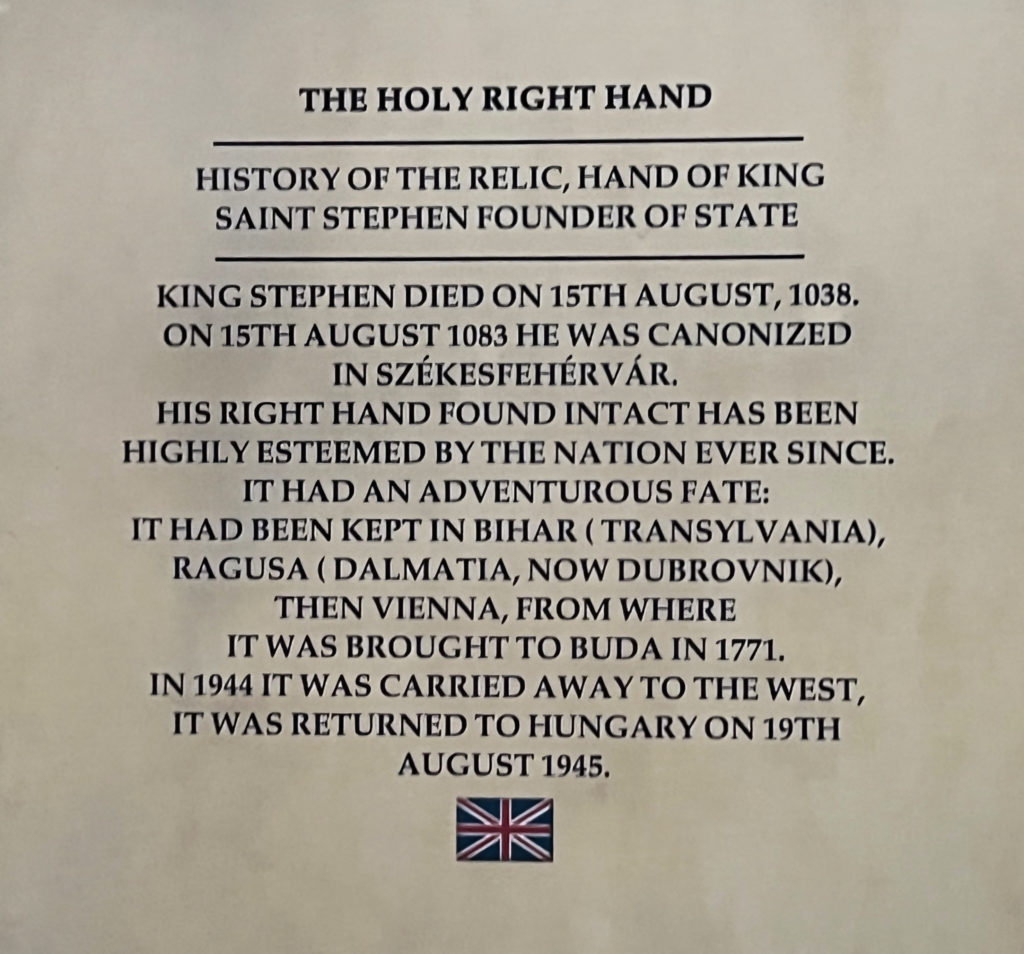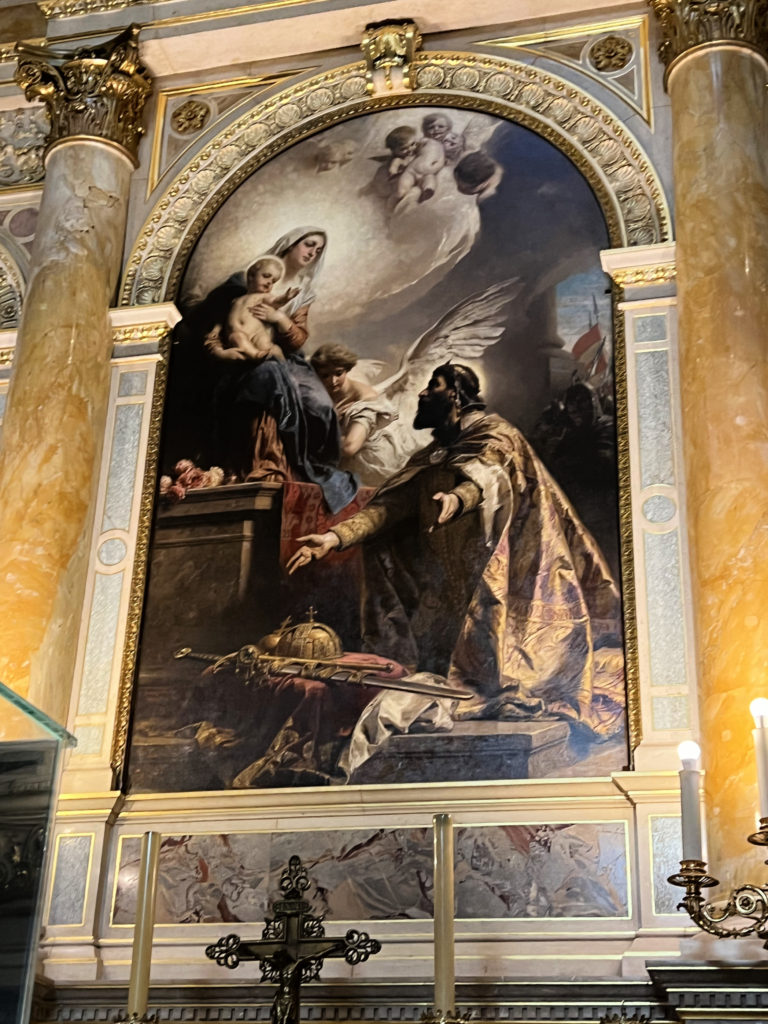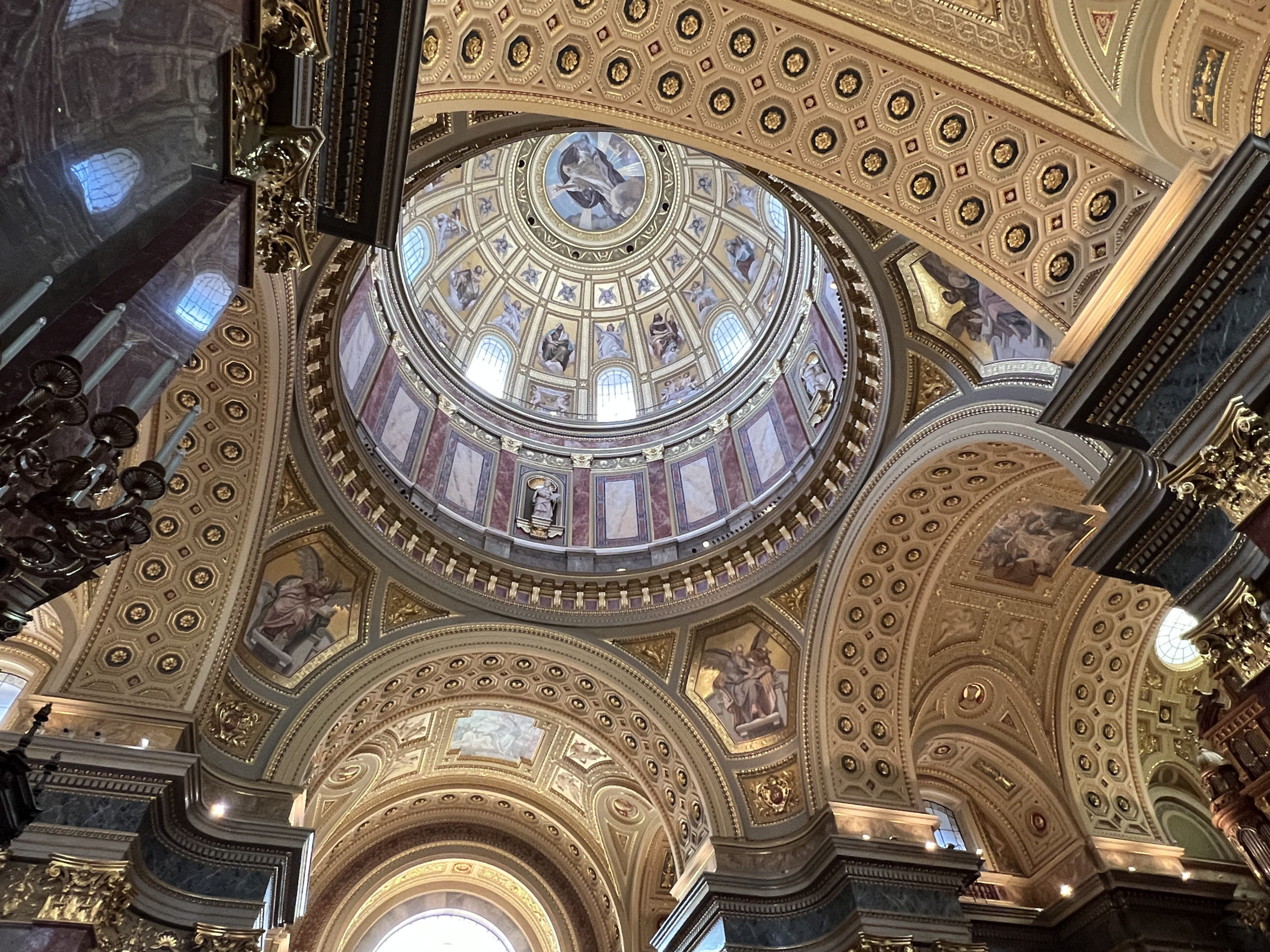
St. Stephen’s Basilica, Budapest
St. Stephen’s Basilica is named in honor of Stephen, the first king of Hungary (975-1038). The site itself has an interesting history
A theatre – famous for its animal fights – stood in the place of the basilica in the 18th century. Before construction of the church, an enormous flood ravaged the city in 1838, which came to be known as the large flood of Budapest. The square on which the building now stands rose up from the flat plain of Budapest and offered refuge for hundreds of people during the disaster. Survivors considered their fate to be a divine miracle so they donated money to have a church built at the location of their survival.
https://visithungary.com/articles/st-stephen’s-basilica
During the construction of the Basilica, the dome collapsed in 1868 resulting in demolition of everything completed to that point. A total rebuild was necessary which was finally completed in 1905. The Basilica is 96 meters tall, the same height as the Hungarian Parliament Building, suggesting the importance given to both state and religion.
The first pictures below shows the Basilica’s facade. In the second, the bell towers are also visible. The bell towers’ oldest bell, the Assumption of the Blessed Virgin Mary bell, is as old as the Basilica. Newer and smaller bells are also in the tower.
The following information about the Assumption of the Blessed Virgin Mary bell was published by the most popular periodical of the second half of the 19th century, Vasárnapi Újság: “The residents of Pest received a beautiful Christmas present this year. The new 5,600-pound bell of the basilica under construction in Lipótváros, which, after being consecrated on 10 December was lifted into the tower and first sounded at Christmas. It surpasses the ordinary bells of Pest in both beauty and voice.”
https://pestbuda.hu/en/cikk/20200821_the_bells_of_saint_stephen_s_basilica_hungarian_and_german_masterpieces
The third and fourth pictures are of the entrance. The first of these has been lightened considerably so the mosaic of Jesus near the top of the archway can be seen. The next picture is a close-up of the relief of St. Stephen that is directly over the entrance doors.
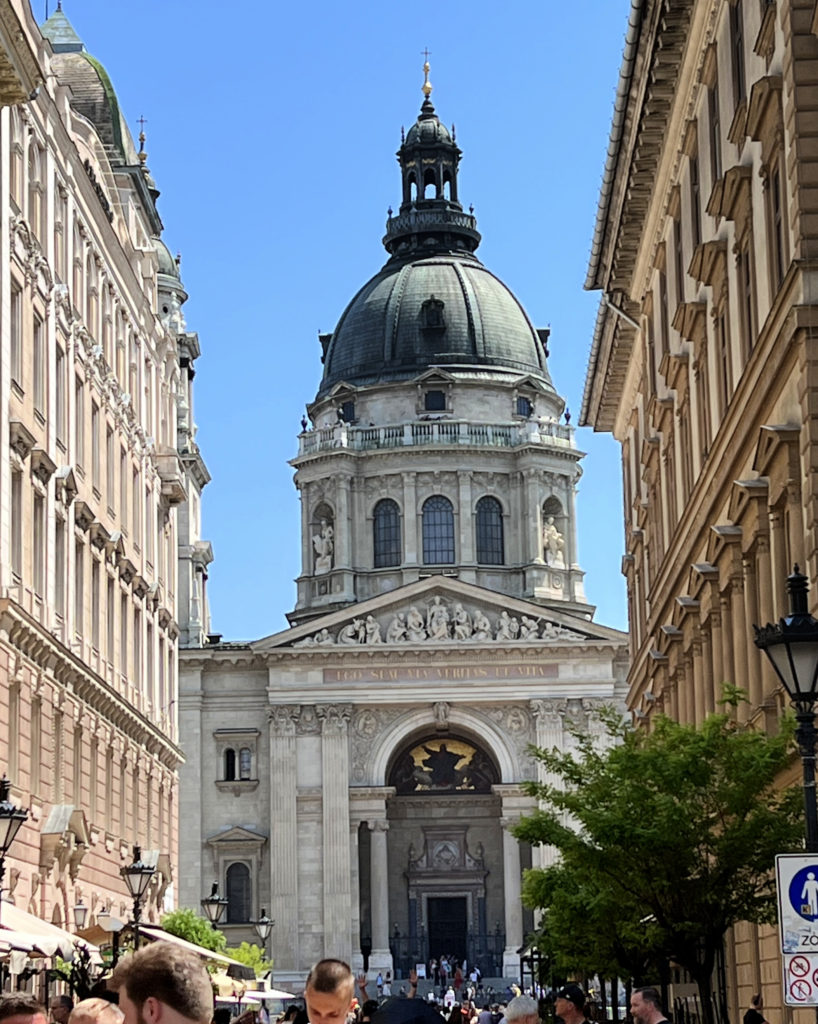
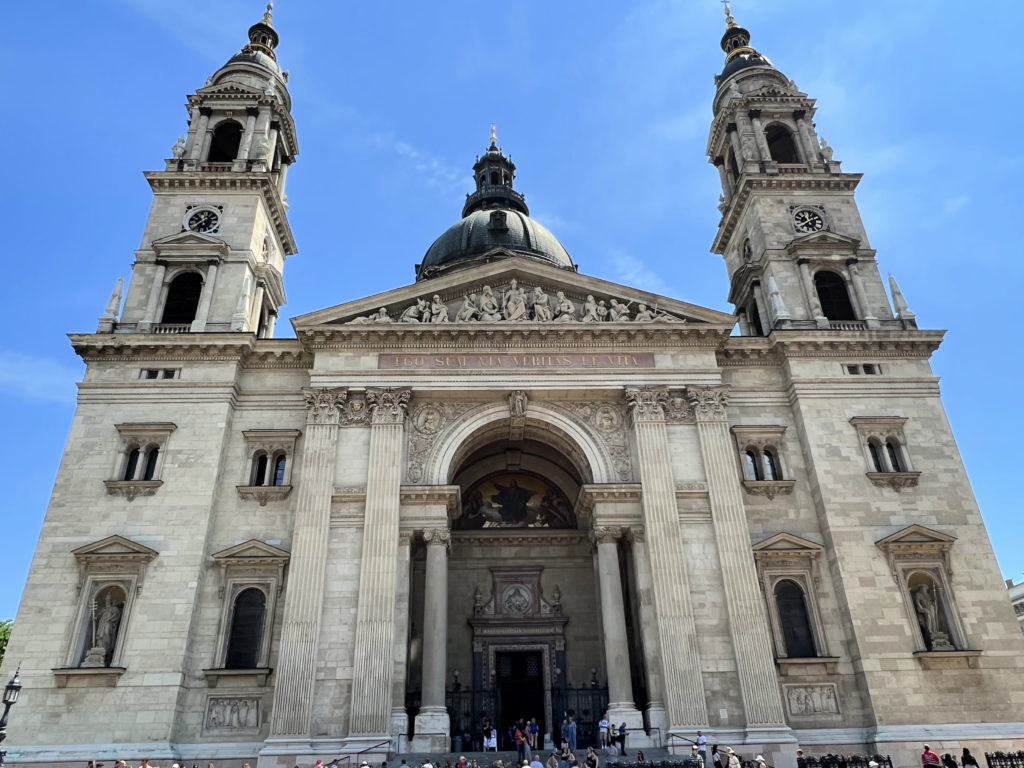
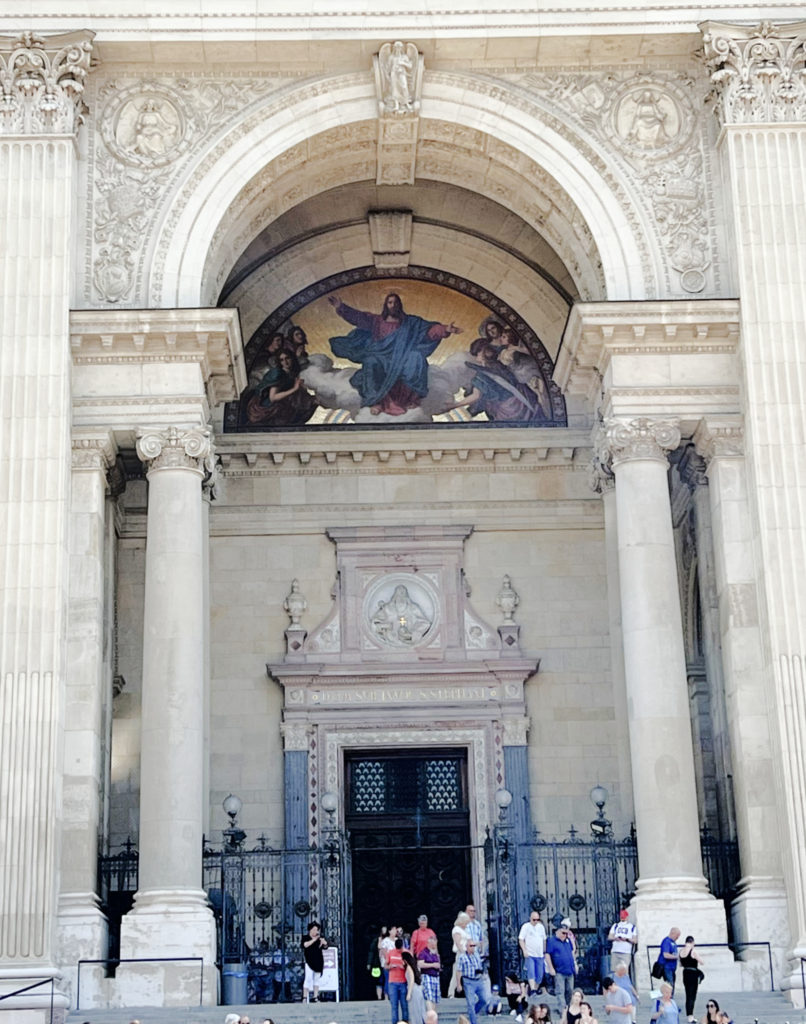
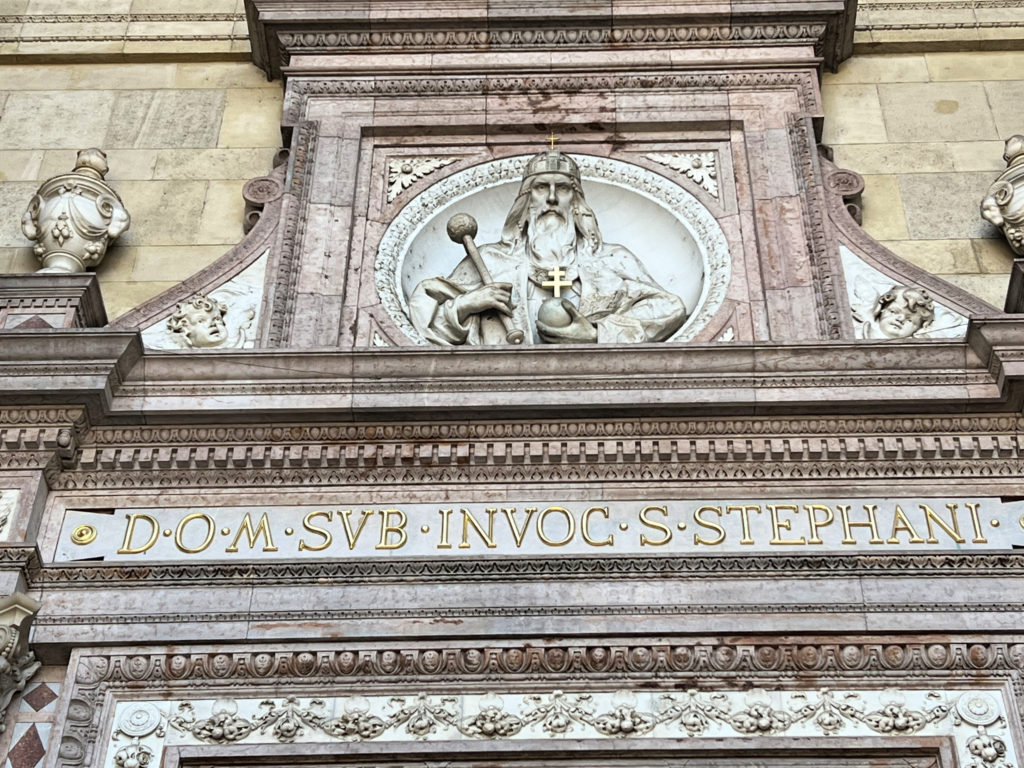
Pictured below are pictures of the Basilica’s dome. In addition to the dome collapse during the initial construction of the Basilica, there was also a fire that destroyed the dome in 1947. The fire was thought to be a result of repair work on the roof that was occurring at the time. Firefighters’ equipment could not reach the dome. The Hungarian Communist Party and their leaders secured government aid and collected funds to rebuild the dome and a new dome was soon completed. The first picture is from film taken at the time of the fire. The dome as we saw it can be seen in the second picture in this section.
We took two elevators and some stairs to a viewing area on the dome. While on the stairs near the elevator, we were able to see the supports and wooden framing of the dome. In the fourth picture below, you can see the “fenced” area from which we could walk completely around the dome. There are also pictures of one of the bell towers and Buda Castle from the viewing area.
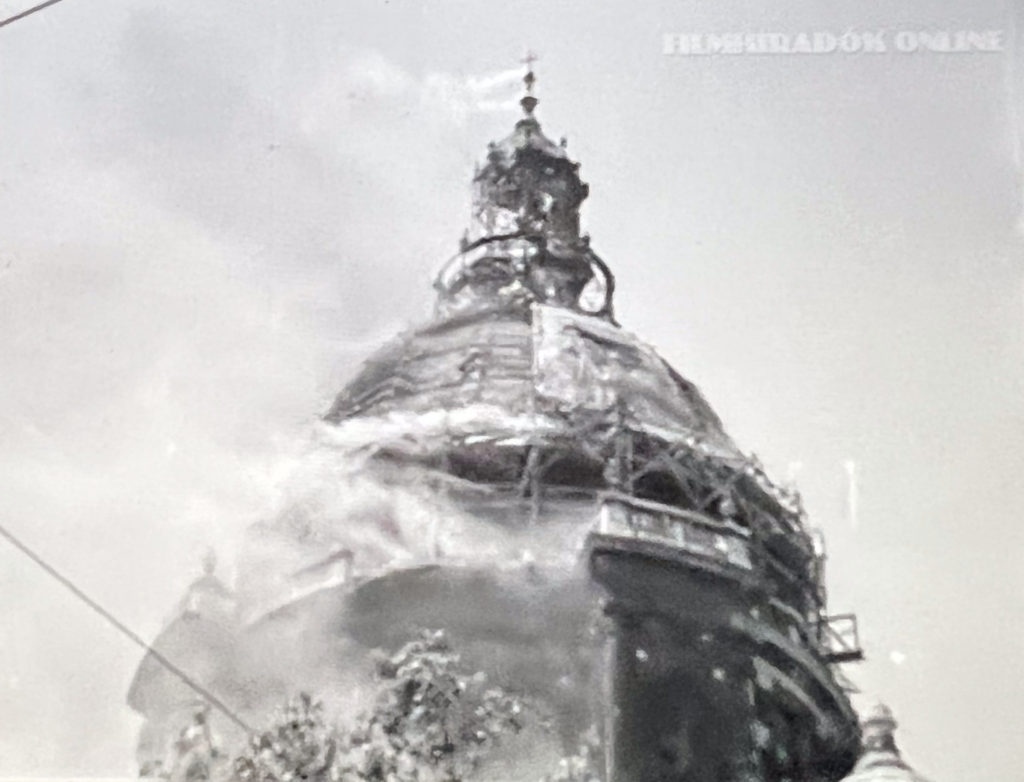

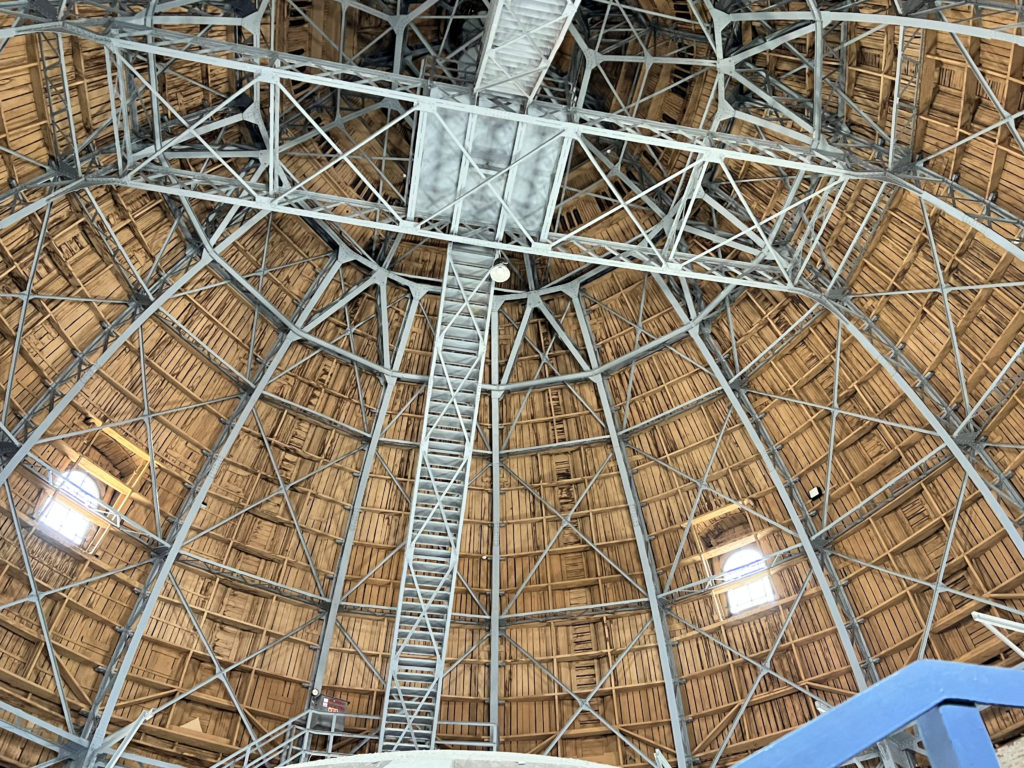

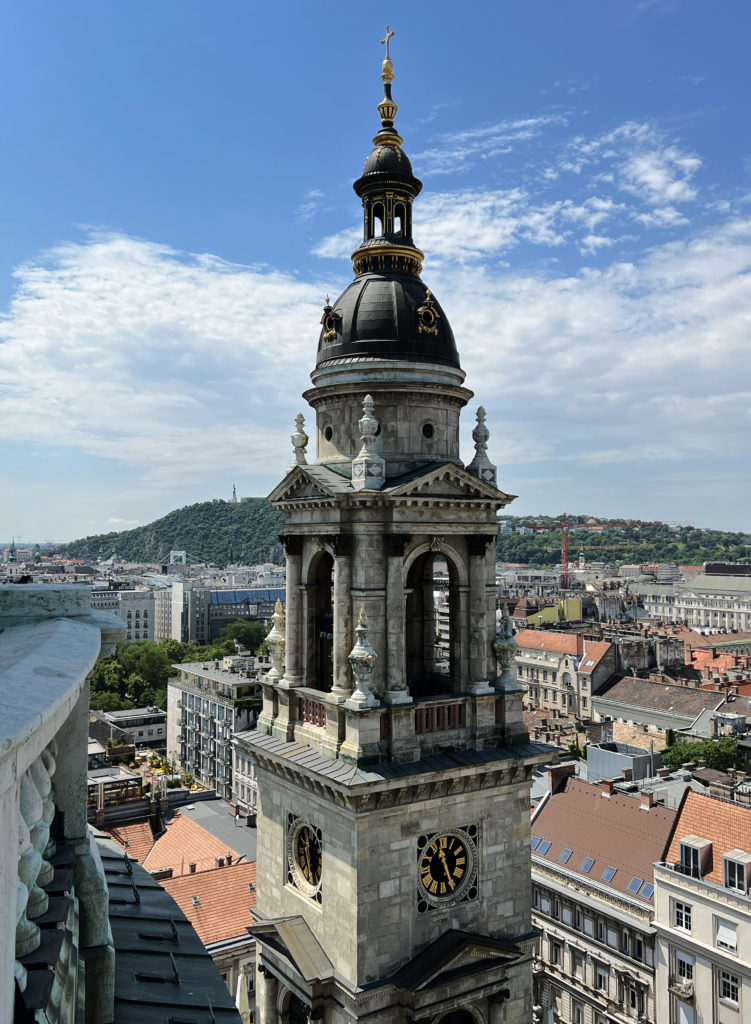
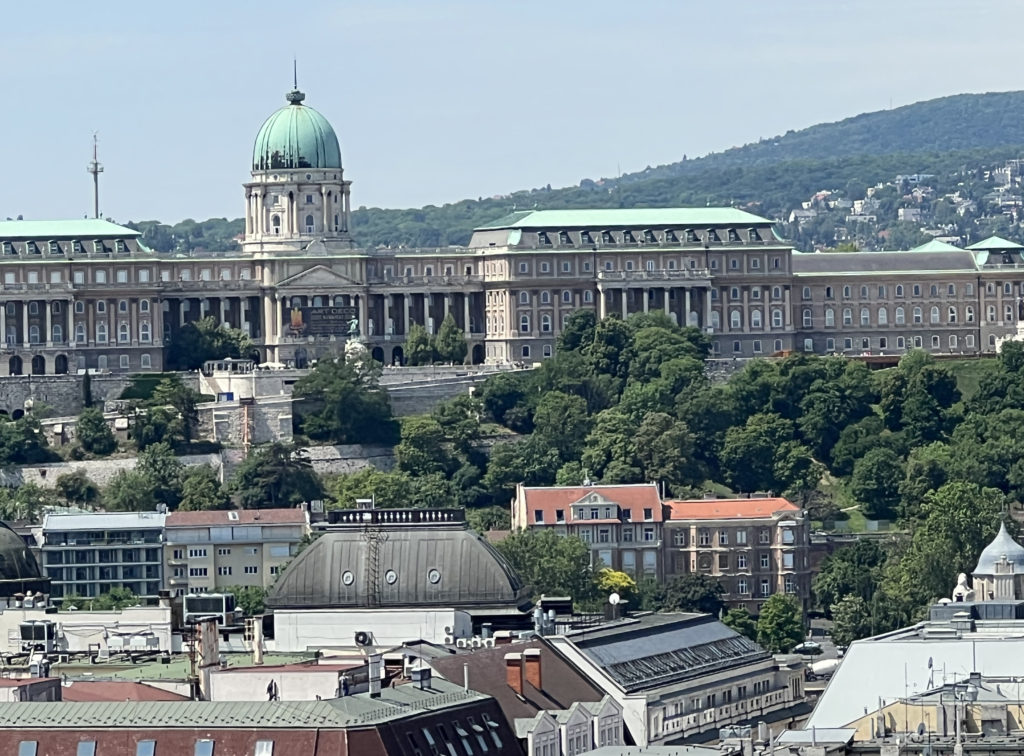
The interior of St. Stephen’s is adorned with marble, mosaics, stained glass windows and gold. The altar features a statue of St. Stephen made of solid marble. Behind the altar are bronze reliefs of St. Stephen’s life. The dome is decorated with mosaics. God is in the center of the dome surrounded by angels and saints. All of the artwork in the Basilica was completed by Hungarian artists and sculptors. I have also included a picture of one of the side altars and a gilded candelabra.
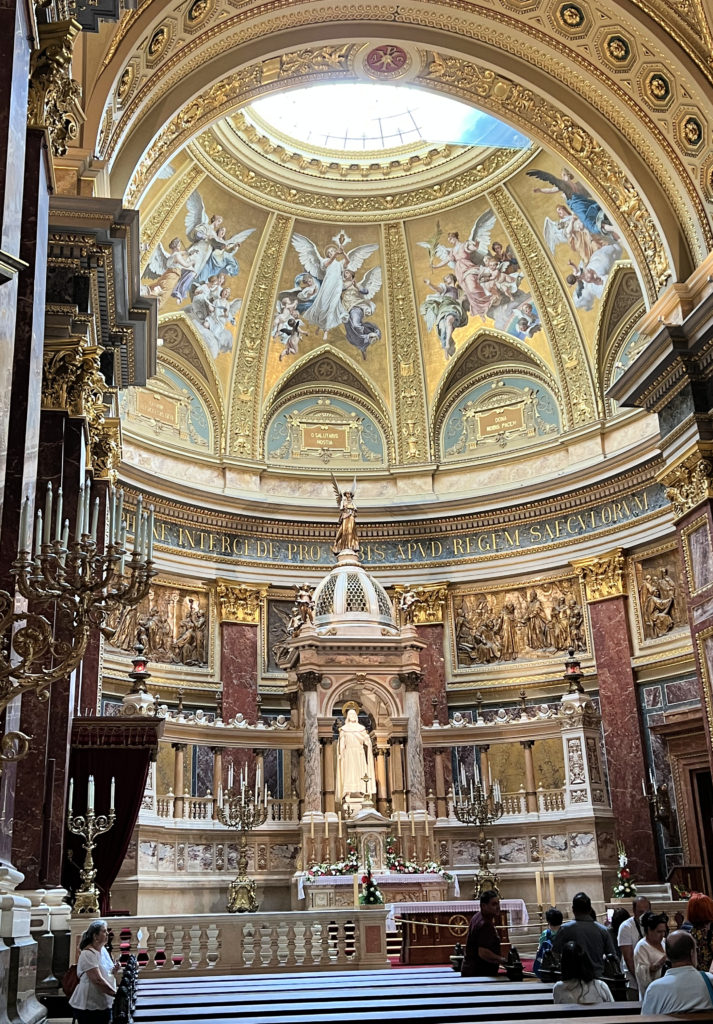
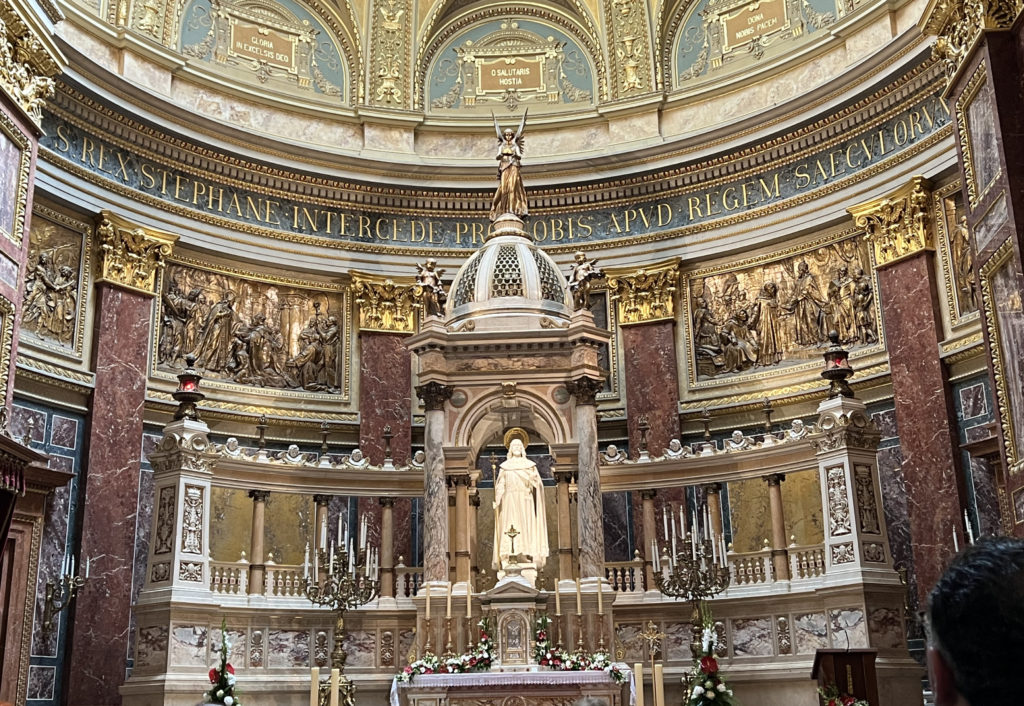
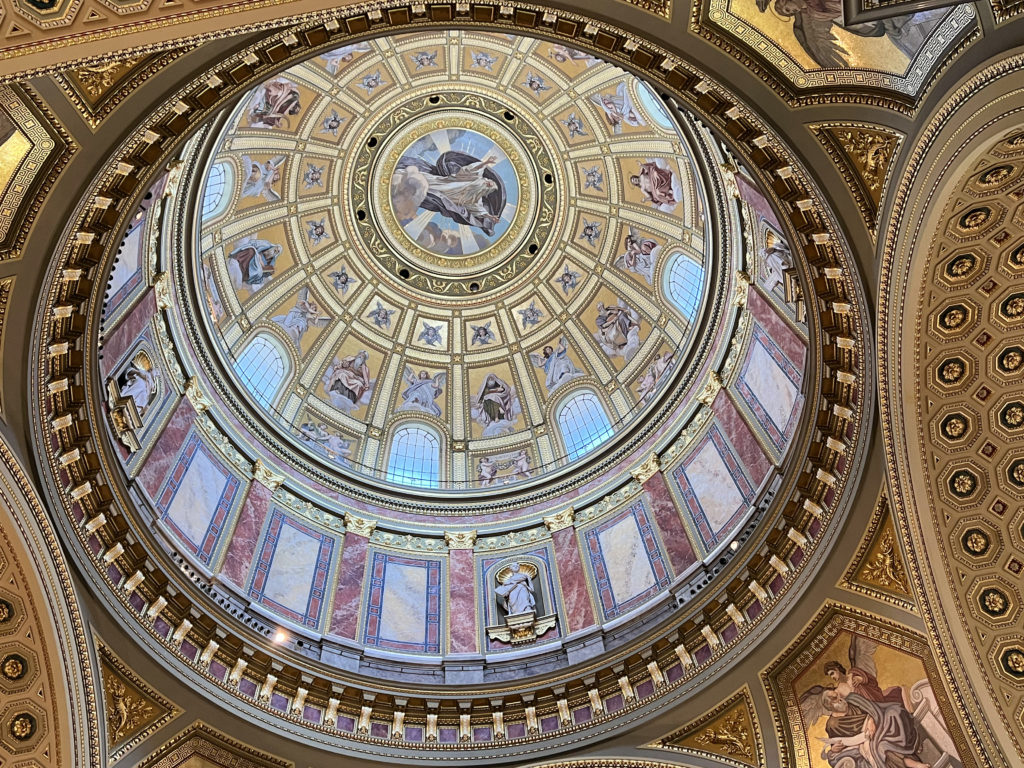

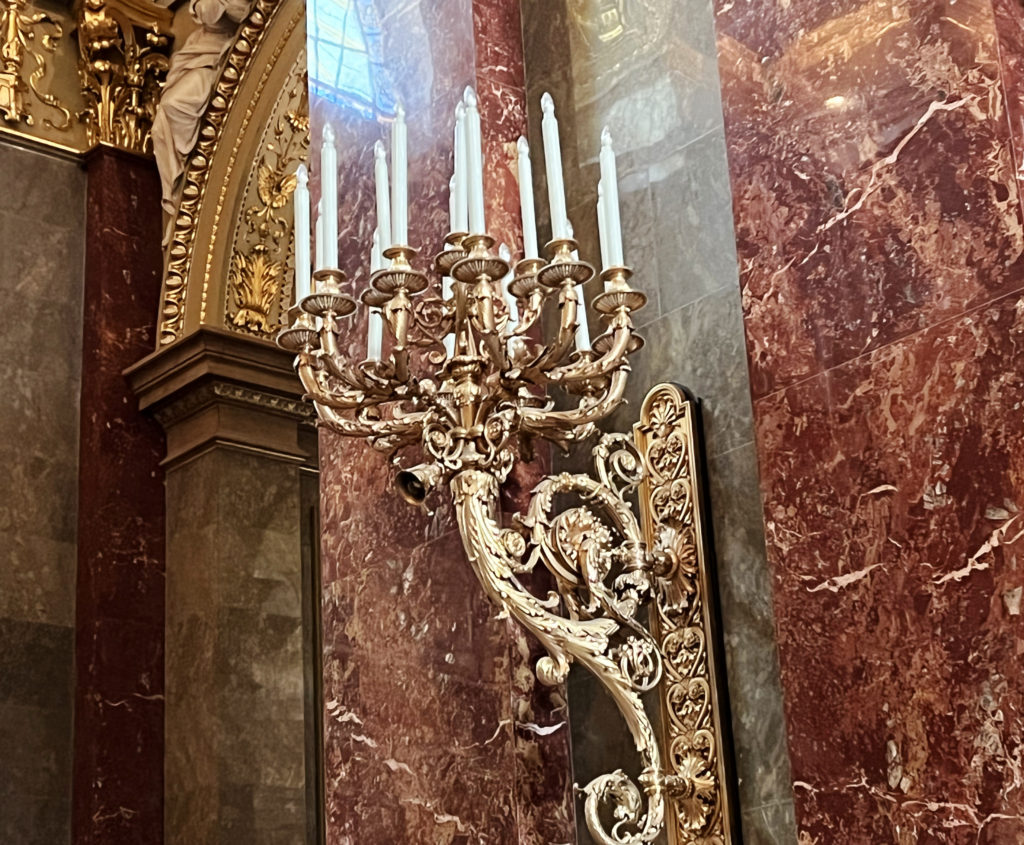
St. Stephen’s Basilica is also well-known for its Holy Right Hand belonging to St. Stephen. His coronation took place on Christmas Day in 1000. Religion was important to him and he sent out missionaries, founded Abbys and required the building of churches. When he died in 1308, he was declared Hungary’s patron saint.
After defeating pagan warriors in a fight for his crown, Pope Sylvester II granted the “Sacred Crown” to King Stephen of Hungary. On Christmas Day in the year 1000, the future patron saint became the King of Hungary. King Stephen then dedicated his country to Christian principles. According to St. John Paul II, the king did not consider his crown an honor, “but a service.”
https://www.churchpop.com/2019/08/20/how-a-kings-magnificent-dedication-to-the-virgin-mary-became-a-national-holiday-in-hungary/
When King Stephen was named a saint, his body was exhumed. Supposedly his right arm and hand were not decomposed. It was cut off to be preserved. It traveled to a number of places through the years but made its way back to Hungary in 1945. It is displayed in the golden reliquary in St. Stephen’s Basilica and is pictured below.
The last picture is an altar painting in one of the chapels. It was painted by Gyula Benczur, an Hungarian painter. It shows Saint Stephen offering his crown to the Virgin Mary, probably inspired by the information quoted below.
On the day of his death in 1038, King St. Stephen dedicated his country to the Blessed Virgin Mary on the Solemnity of the Assumption. He requested that the state and Church leaders “protect and spread the Catholic faith.” He dedicated one of his final prayers to the Blessed Virgin Mary: “To thee, O Queen of heaven, and to thy guardianship, I commend the holy Church, all the bishops and the clergy, the whole kingdom, its rulers and inhabitants; but before all, I commend my soul to thy care.”
https://www.churchpop.com/2019/08/20/how-a-kings-magnificent-dedication-to-the-virgin-mary-became-a-national-holiday-in-hungary/

